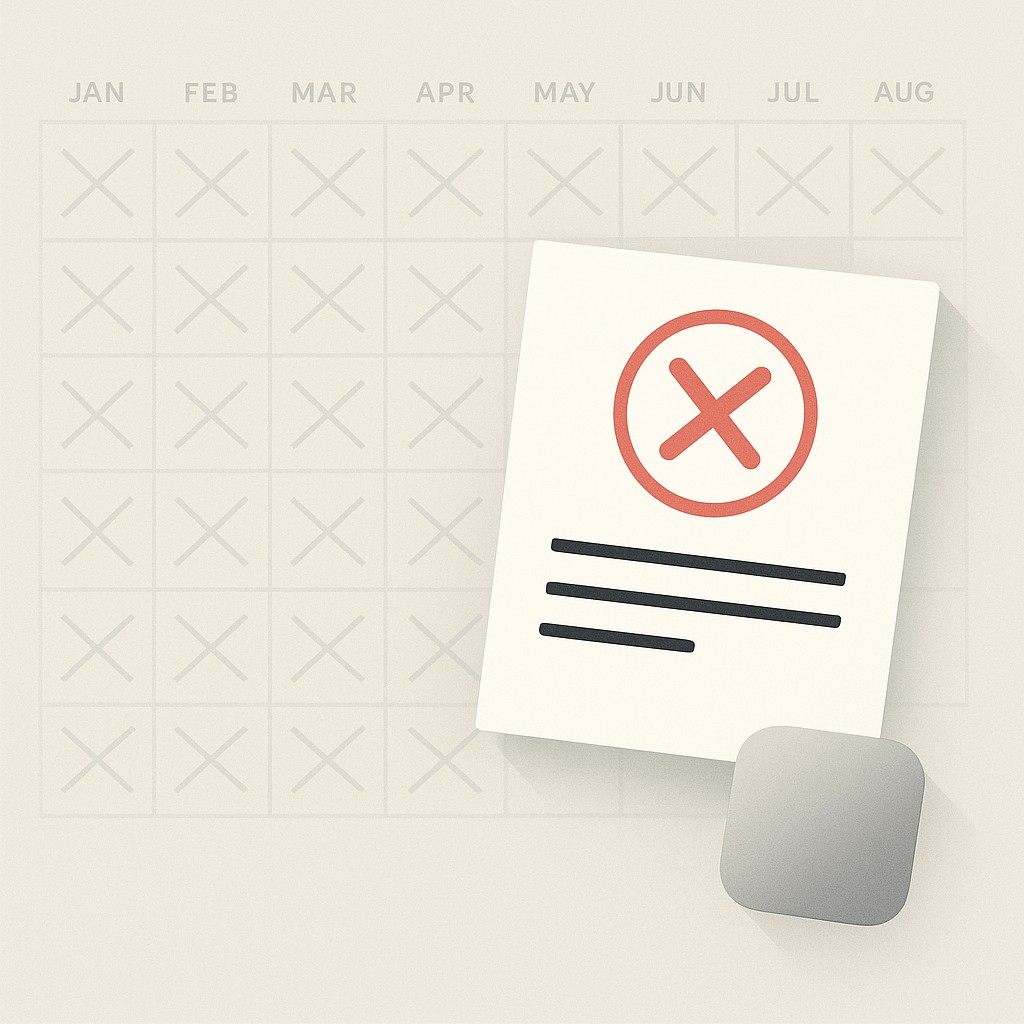Stop Waiting to Launch: Ship Early to Learn What Really Matters
Stop Waiting to Launch: Ship Early to Learn What Really Matters

Stop Waiting to Launch: How Perfection Delays the Truth
Stop waiting to launch was the lesson I ignored as I built my first iOS app, overlooking what launching early taught me. The truth is, it cost me more than I thought it would. Days, weeks, nearly a year—all that time blurred into a cycle of not-quite-ready.
For almost twelve months, I obsessed over every detail. Automating things, tweaking onboarding flows, ironing out pixels—hoping that each pass made it more solid. All of it felt essential at the time.
Finally, pouring a mix of pride and nerves into the submission, I handed it over to the App Store. I was sure I’d built something real. The rejection came back almost instantly.
Turns out, my app violated a policy I hadn’t even considered. After all that time working in isolation, a single guideline I’d missed blew up the whole launch. Not spotlighted by my weeks of research, not caught by any test run or beta feedback. Just buried in fine print, waiting to trip me up. All those months spent polishing features were beside the point when my app couldn’t even get through the front door.

That’s the pain. Months of effort, wiped out in seconds.
Ship Fast to Reveal What Really Matters
Early in my career, I made a classic rookie mistake. I waited too long to launch my app. I thought I was getting closer to being “ready,” but in reality, I was just burning months on details that never got tested outside my own head.
Here’s what I missed: constraints don’t show up until your product meets reality. It’s the difference between catching a typo in your code before you run it and hitting a crash when real data enters the mix. You get further, faster by focusing less on reliability and more on finding feedback and real fit early on (DORA DevOps Report). When you ship, you’re not just testing features. You validate assumptions early about users and the rules of the platforms you depend on. Until you put something in front of a real gatekeeper or user cohort, deal-breakers stay hidden.
Polish and automation felt productive, but honestly, they were just caches for my unvalidated guesses. Every extra week I spent optimizing flows postponed the inevitable moment I had to face the App Store’s actual policies—and real people’s actual opinions. If you’ve ever spent hours smoothing a workflow only to have it blocked by an outside rule, you know what I mean. Don’t let your best work live in limbo.
So, here it is. Speed to reality always wins. Commit to shipping a minimal, testable version—fast, making the ship-or-refine call with a bias toward learning. Get it in front of real constraints, real users, real feedback. That’s the only way to find what matters most and avoid the hidden tax of delay.
Three Traps That Derail Launch—and How to Escape Them
I spent weeks building orchestration scripts to automate onboarding and notifications before a single user ever saw them. Looking back, none of those flows worked right in reality. They solved problems that hadn’t even been confirmed yet. I believed I’d refine them after launch, but I got lost in automating processes that didn’t need to be perfect from day one.
To avoid overengineering, remember that automation always feels like progress. It’s like adding new lanes to a road because you hope for more traffic, not because you’ve measured demand. All those systems seem to promise “scalability,” but you’re actually betting on untested assumptions. If your core product’s value or compliance isn’t locked down, automation just multiplies that risk. The right moment to optimize is after you know people care—so you’re deciding what to automate next based on real demand. Otherwise you’re just making the wrong thing easier to repeat.
I once tried—this is embarrassing—to optimize my mornings by buying a fancy gooseneck kettle and a coffee scale before I actually liked drinking coffee. The kettle sat untouched for weeks. I filled the scale with cereal once, just to justify having it. Eventually, I realized none of it made my mornings smoother. All that gear and routine planning couldn’t mask the fact that I hadn’t even figured out what “good” tasted like to me yet. I had to start with enjoying one honest cup. The same applies to products. Don’t invest in perfection before you know what’s worth repeating.
Afraid of a rough release hurting your reputation? That’s a normal worry. But a tightly scoped beta or pilot, flagged clearly for early feedback and tested with small cohorts, actually builds trust and credibility. When you show that you value learning fast—and frame the launch for input—you get credit for professional rigor, not recklessness.
Tech debt is another one that trips me up. Six months ago I spent a whole sprint stressing over which backend stack would hold up if I had thousands of users. My app didn’t even have ten. You can spend weeks trying to build the “right” foundation, but not all debt is permanent. The trick is to separate reversible choices from ones that lock you in. For the former, time-box tracer bullets—brief, low-investment prototypes that validate before building, so you can probe core risks without committing to full solutions. Fix what breaks after you learn why it matters.
Some irreversible choices—like picking a database with no migration path—deserve upfront caution, but most early decisions are more flexible than you think. Deferring perfect solutions until feedback shows what’s needed isn’t sloppy. It’s staying nimble and letting reality guide your investment. Don’t let the fear of future cleanup slow you down now. Shipping small and soon preserves momentum, and you’ll learn far more by seeing what holds up against actual use than by guessing in isolation.
There’s still a part of me that falls for the “just one more improvement” trap, especially late at night when it feels like I can solve everything with another script. I know it’s not true. I still do it.
How to Actually Ship in a Week—Concrete Steps, No Excuses
The quickest way to break the cycle of endless tweaking is to define the thinnest possible version that gets real feedback. That means picking exactly one job-to-be-done—the “core workflow,” nothing else—choosing one cohort to test with (a small, relevant slice of your audience), and targeting just one platform or approval flow. This isn’t about MVP in theory. It’s a single, testable slice designed to launch your MVP early. For example, if your app’s goal is “schedule a reminder,” launch with only that, for one group, on one device. Don’t let yourself pad it out. Strip it back until the only thing left is what proves the concept.
For days one and two, force yourself to build just the smallest path through that core workflow, even if it means doing everything else by hand. If you’re updating a database, use a spreadsheet. If you need logins, run a script yourself. No background jobs, no automated pipelines. If you have to do everything by hand just to get those first users, that’s not just fine—it’s expected (Paul Graham ‘Do Things That Don’t Scale’). The magic is, manual work tells you what to automate later and keeps you swift.
Come Day 3, pause and do some platform policy reconnaissance. Read the guidelines like you’re looking for a trap. Run automated checks where you can, and, if your platform allows, push your build to a sandbox or something TestFlight-adjacent—even if it’s ugly—just to flush out any hidden constraints. A quick submission now is infinitely cheaper than patching after rejection.
By Day 4, recruit your real user cohort. Think five to ten folks who closely match your target audience, or one lean internal team. Get them set up with clear instructions—remind them it’s rough, and that their feedback shapes what comes next. Instrument basic analytics and error logging so you get signal, not noise; ask sharper feedback questions so you’re hunting for what’s broken, not for vanity metrics. Here’s why: testing with just five users surfaces most usability problems. You’ll know what needs fixing before you build more (NNG Group). Don’t guess at the issues. Watch users fumble, and capture what they say and what your logs show. If it’s confusing to them, it’s broken.
On days five and six, dogfood your app, observe your users, and keep running the manual operations you started with. When you hit friction—due to user confusion or some platform hurdle—cut scope immediately. Focus on the blockers you see. Capture any policy or user issues in one place. The thing is, if I’d launched earlier, I could have caught the issue, pivoted, and saved months of frustration. What stings most is that months of work could have been redirected by feedback I didn’t get because I shipped too late.
By Day 7, ship to that small cohort. Frame it as a beta or pilot. Set expectations so they know exactly what stage you’re in. Tell them what you plan to learn in the next week, and commit to a ship early iterate fast cadence up front. Instead of acting like you’re launching a masterpiece, treat it as a learning round. You’ll get sharper, faster, and almost certainly dodge the hidden blockers that waste months. You’ll see how much momentum you keep just by working this way. If you care about moving forward, this is the playbook.
Guardrails for When You Ship Fast—Protect Reputation and Learn Quickly
Keep your release tight. Promise less and control visibility. Scope as narrowly as you dare, and use feature flags or toggles so you can disable anything risky. Roll out to a small set of testers, not the whole world, and slap a clear “beta” or “pilot” label right where everyone can see it. This builds a buffer for mistakes and sets real expectations. While you do this, create a feedback-first culture so lessons compound. You don’t need to risk your public reputation to get meaningful feedback—just be explicit with both the boundaries and the messaging.
In that first week, tune in to the signals that matter. Track activation—did users actually complete the core task at least once? Watch out for churn by checking if they come back or drop off (an early retention proxy). Policy compliance is huge. Scan your logs for violations or anything that hints at crossing platform lines before you scale up. Error rates or crash logs matter too. High numbers mean broken trust, so fix those first. At the end of the week, look back and ask: Did people use it, was anything blocked by policy, and were the bugs fixable? Those are the facts that shape your next build.
Ship learning, not polish—use our AI content builder to draft updates, release notes, and emails in minutes, so you can share progress, gather feedback, and stay focused on the next iteration.
Here’s your commitment. Pick one cohort, one platform, and one job to validate this week. Fast shipping isn’t reckless—it’s protection. The quicker you fit reality checks in, the less you waste time second-guessing, and the more momentum you’ll keep. Back in the automation trap I talked about earlier, it’s easy to forget how much energy you lose by trying to perfect your way past uncertainty. Don’t let imagined risks slow you down. Facing the real ones early is what creates progress.
I learned the hard way that fast feedback beats polished isolation. Stop waiting to launch—it’s the most honest route to finding what works, and it’s the only way I know to avoid months of regret.
Enjoyed this post? For more insights on engineering leadership, mindful productivity, and navigating the modern workday, follow me on LinkedIn to stay inspired and join the conversation.
You can also view and comment on the original post here .
